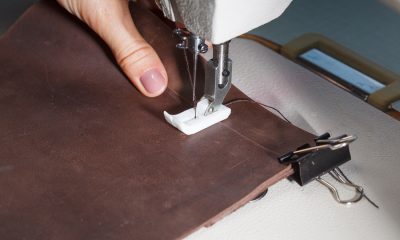Hand Sewing
Hand Sewing Leather Patches On Jeans
Hand-sewing leather patches on jeans can be a great way to add personality. You can find leather patches in the shapes of letters, animals, and other cool designs; this is a great way to express your creativity.
The available designs are limitless. Anyone interested in doing this can easily find thousands of different patterns and interesting ideas online by visiting a number of forums, social groups or websites that specifically cater to creative sewing enthusiasts.
There are a few very important things about sewing leather you will need to know before attempting to attach a leather patch to your jeans.
Though such a project does not seem like it would be extremely dangerous, a few safety precautions must be taken to avoid any small mishaps that can turn into big problems.

Safety First
Sometimes, a project such as this will only require the use of dull stitching needles, which can damage your fingers or other parts of your body if enough force is exerted. In a case such as this, there is less of an injury concern as long as you pay close attention and focus on what you are doing.
On the other hand, no pun intended, careless use of sharp needles can result in several physical injuries ranging from irritating finger pricks to infections if the needles are dirty.
Safety concerns about using scissors to cut threads and materials for your project are self-explanatory. Cutting, stabbing yourself or losing a finger would very quickly zap the joy out of your project. Need we say any more about this?
What Tools Do You Need?
We will now look at some of the considerations and some of the items you will need to add leather patches.
Choose The Right Thickness of Leather
Choosing the right thickness and flexibility of your leather is very important because it will need to be bendable, twist-able and even scrunch-able throughout the life of your garment.
Another thing to consider about the thickness and rigidity of your leather is how difficult it will be for you to poke and pull a needle through it.
Use The Correct Thread
The thread that you use must be much more durable and longer lasting than the thread that is commonly used around the household for repairing holes in socks and such. If you can visit a hobby store or leather outlet to purchase the proper materials for your awesome project, that is highly recommended.
Use A Needle Designed For Leather
Leather needles come in a variety of sizes so that you can choose one or more that is easy to handle. They also come in different lengths and shapes to complete specific projects.
Though it is possible to use some of the needles designed for more standard materials, such as cotton and polyester, it would be a little wiser to use a set of needles designed for leather projects.
Have fun expressing yourself, and for goodness’ sake, please be safe.






















